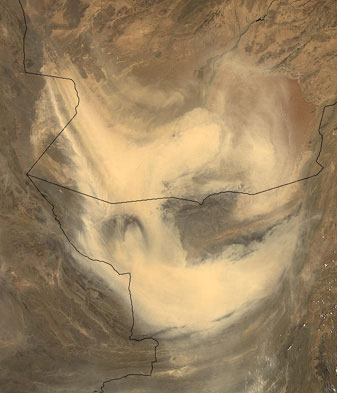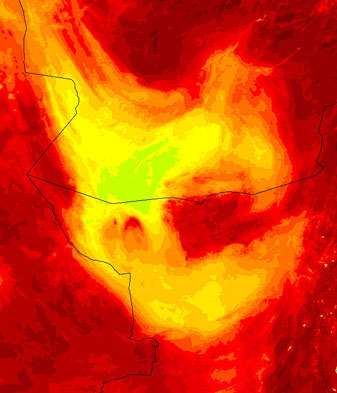
Dust Storm in Afghanistan | Satellite: Terra  1km | 500m | 250m A heavy curtain of dust lay over southern Afghanistan and northern Pakistan on June 14, 2004. The dust appears to be blowing out of the Sistan basin, which is on the Afghan-Iranian border. The Sistan basin is a vast complex of lakes and marshes fed by small streams and rivers flowing primarily from the mountainous highlands of Afghanistan. With the exception of three shallow freshwater lakes, only one of which is visible in the higher-resolution images as a dark depression near the origin of the storm (top left), the wetlands dry completely during the dry season, leaving deposits of alluvial silt, which are easily lifted on the wind. In this true-color Terra MODIS image, the dust is masking the arid deserts of Afghanistan and Pakistan and is sweeping around the Chagai Hills, the dark land in the center of the storm. The crescent of the Siahan Mountain Range in Pakistan is preventing the dust from blowing further south. Once airborne, the dust cools considerably, which makes it stand out in the mouse-over surface temperature image. Here, the dust is as much as 40 degrees Celsius cooler than the hottest regions on the ground. The land temperature in this image reaches up to 57 degrees C (135 degrees F) in pockets where the land is darker, and therefore, absorbs more sunlight. Patches of clouds also show up as extremely cold blue regions in the temperature image. Though the dust is easy to see in this image, surface temperature images can make dust storms easier to spot when the dust is the same color as the ground. Satellite: Terra Image courtesy Jacques Descloitres, MODIS Land Rapid Response Team, NASA Goddard Space Flight Center. All images are public domain.  Front Page Front Page |